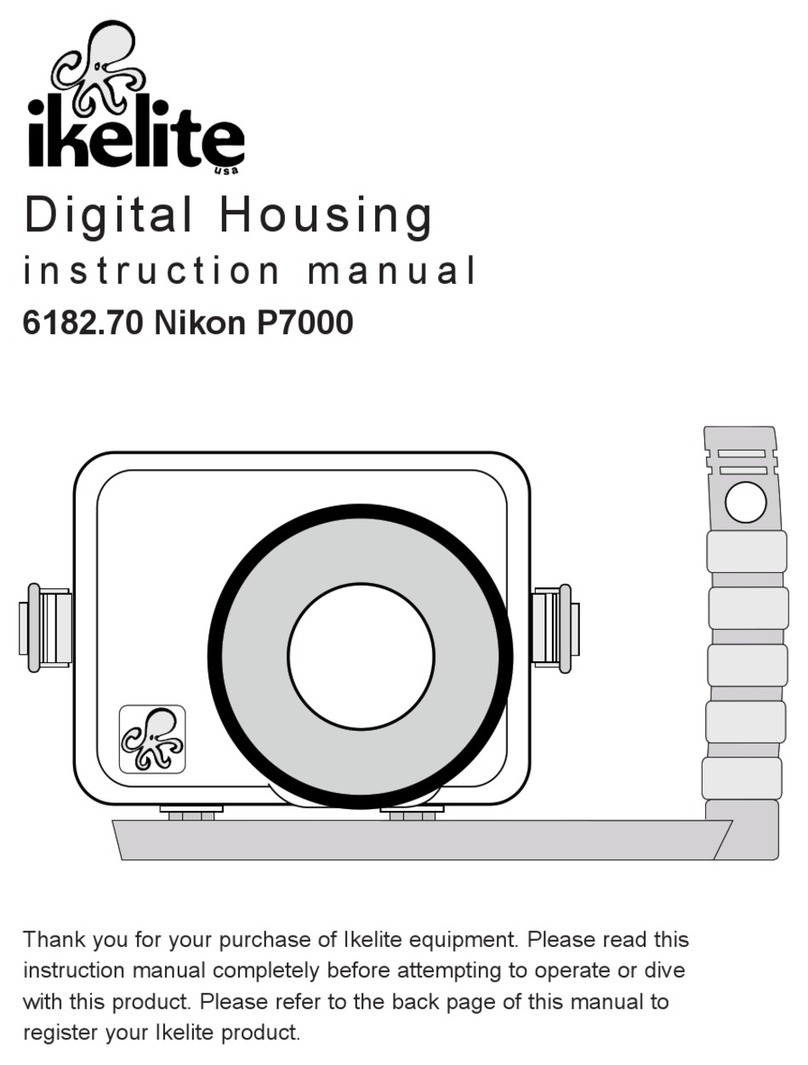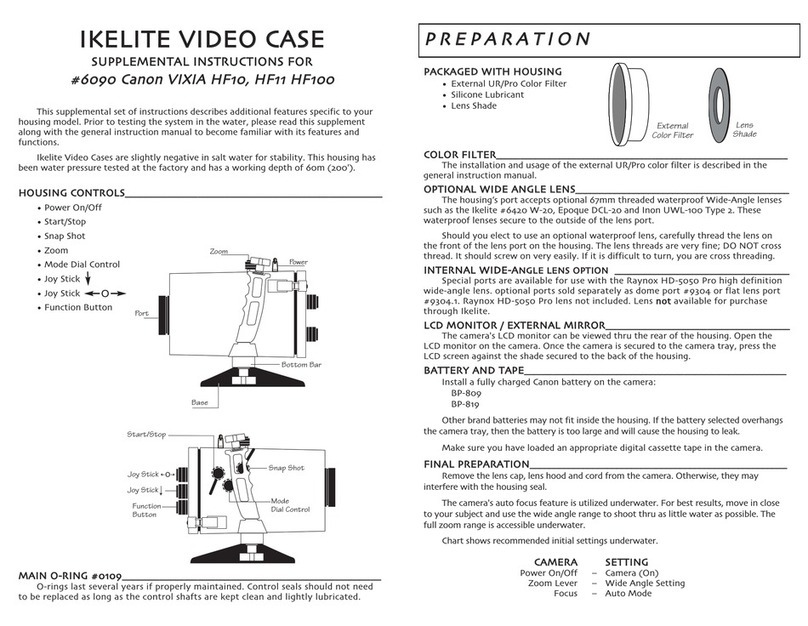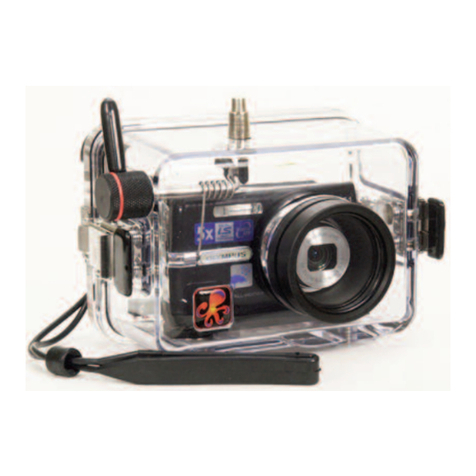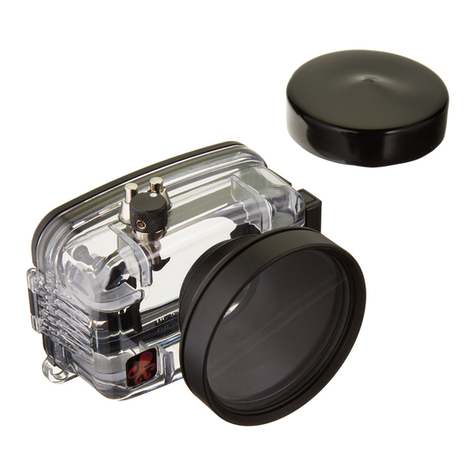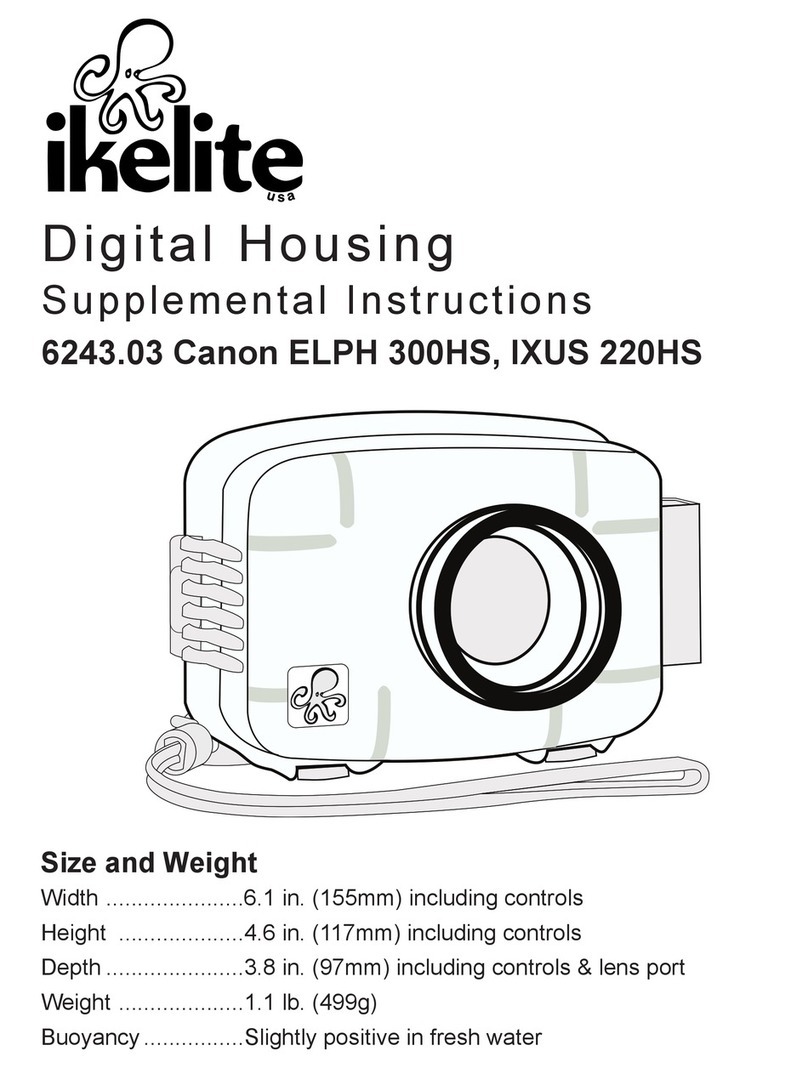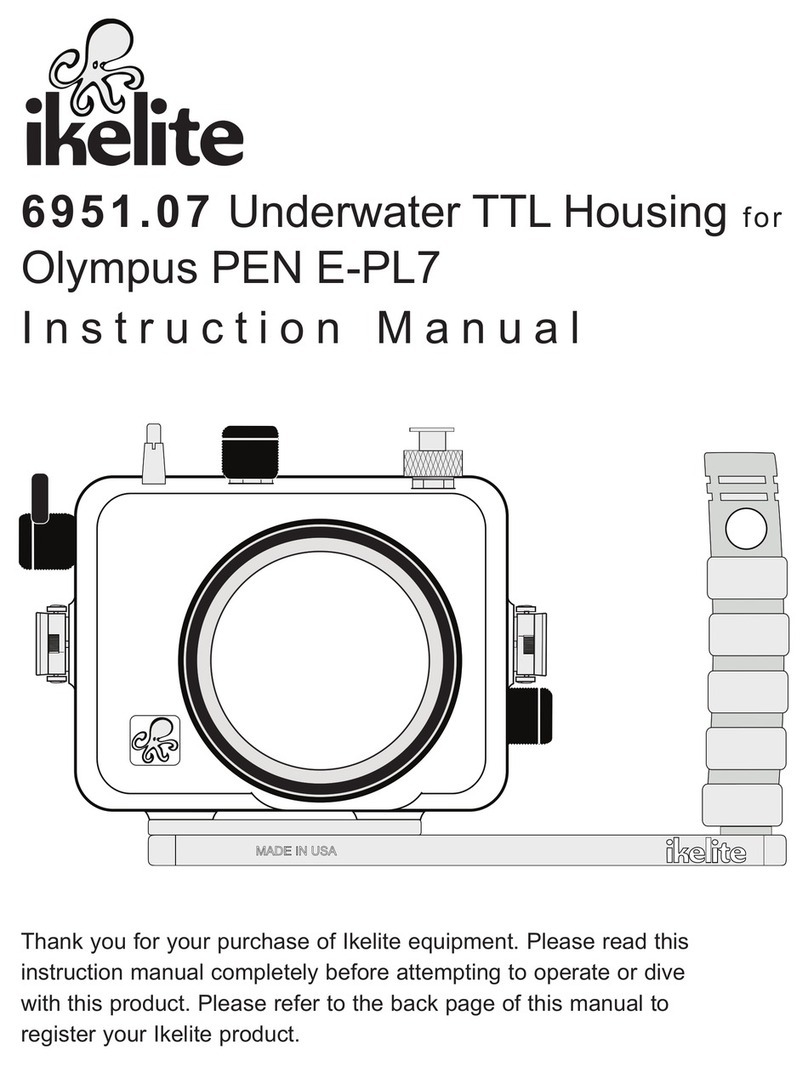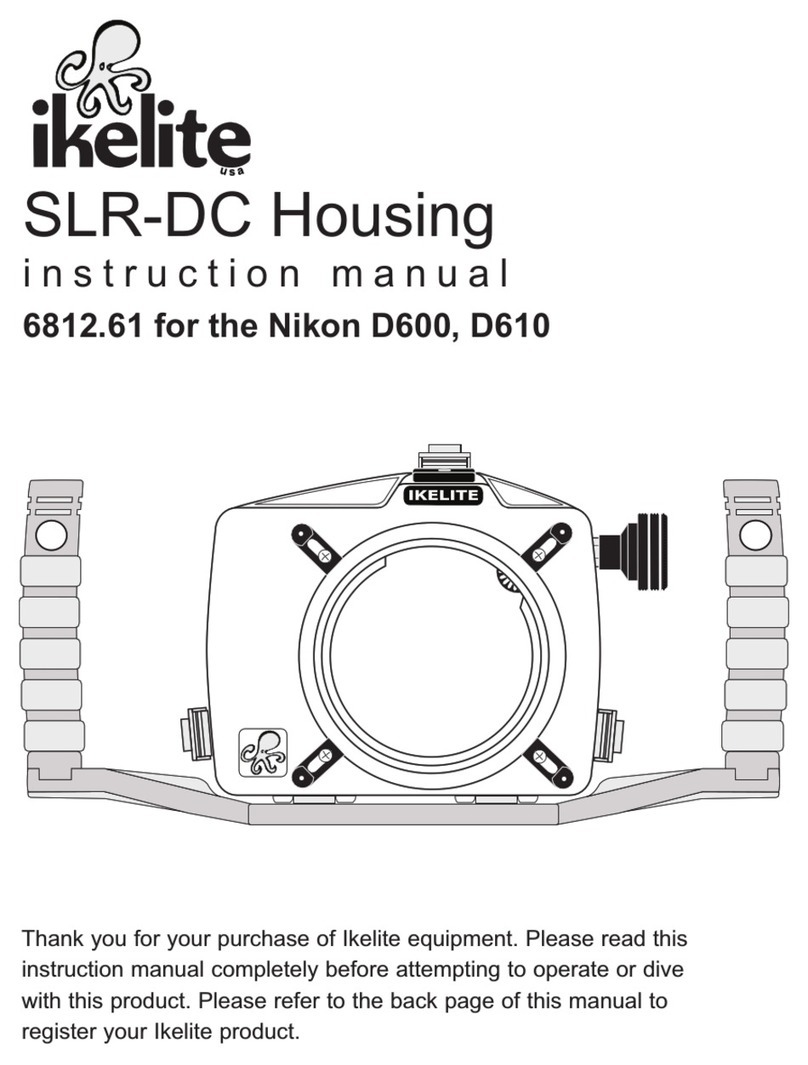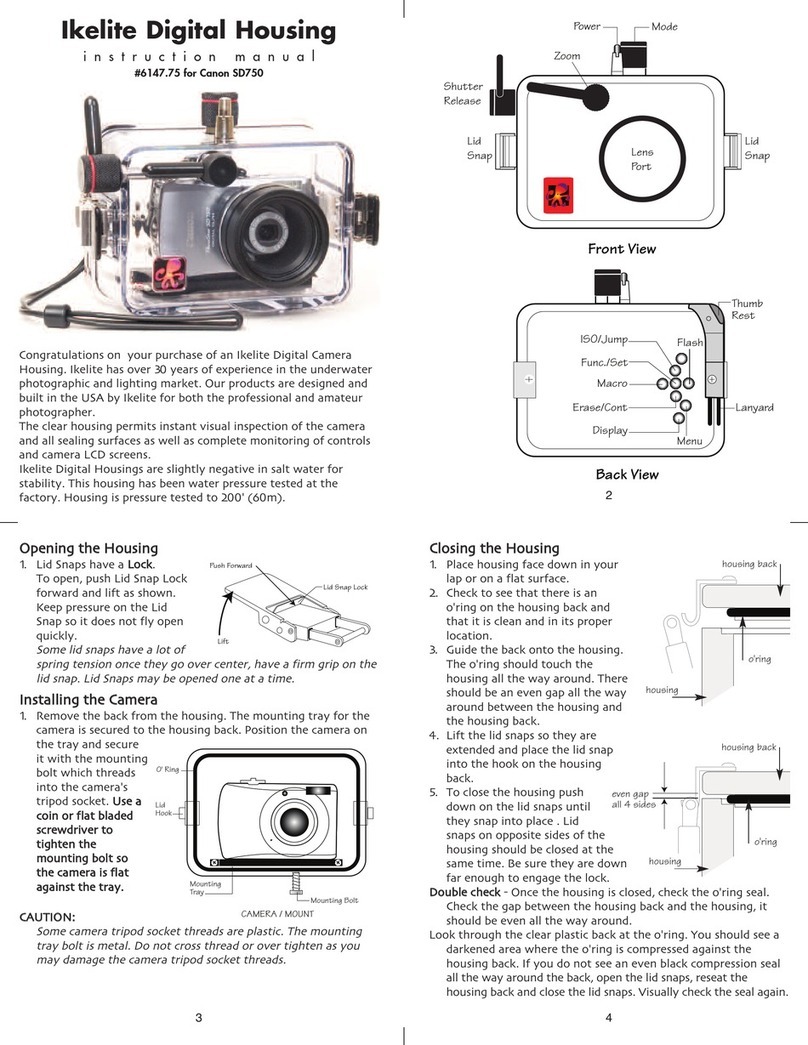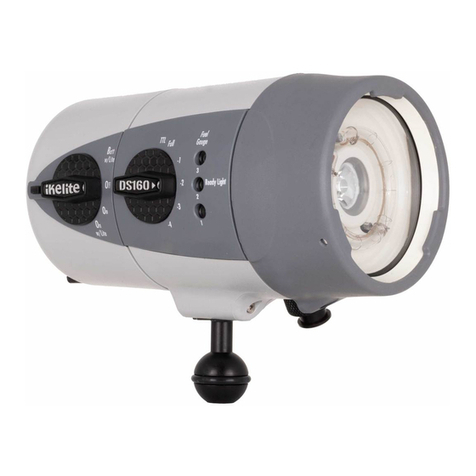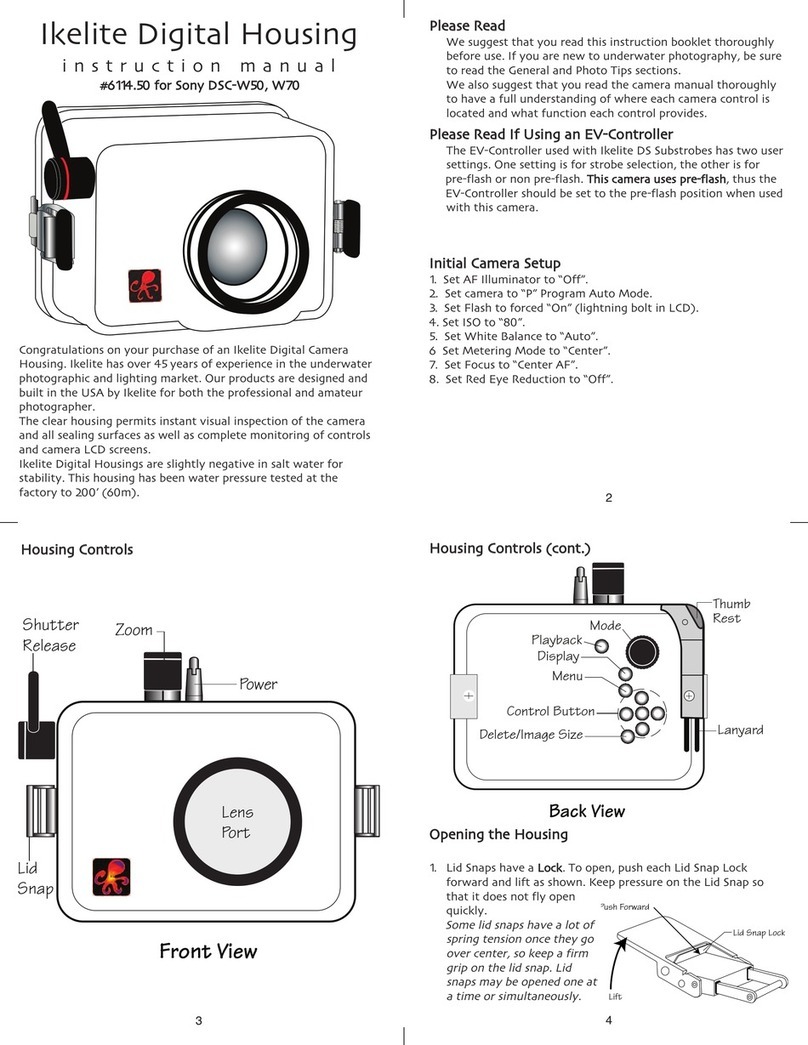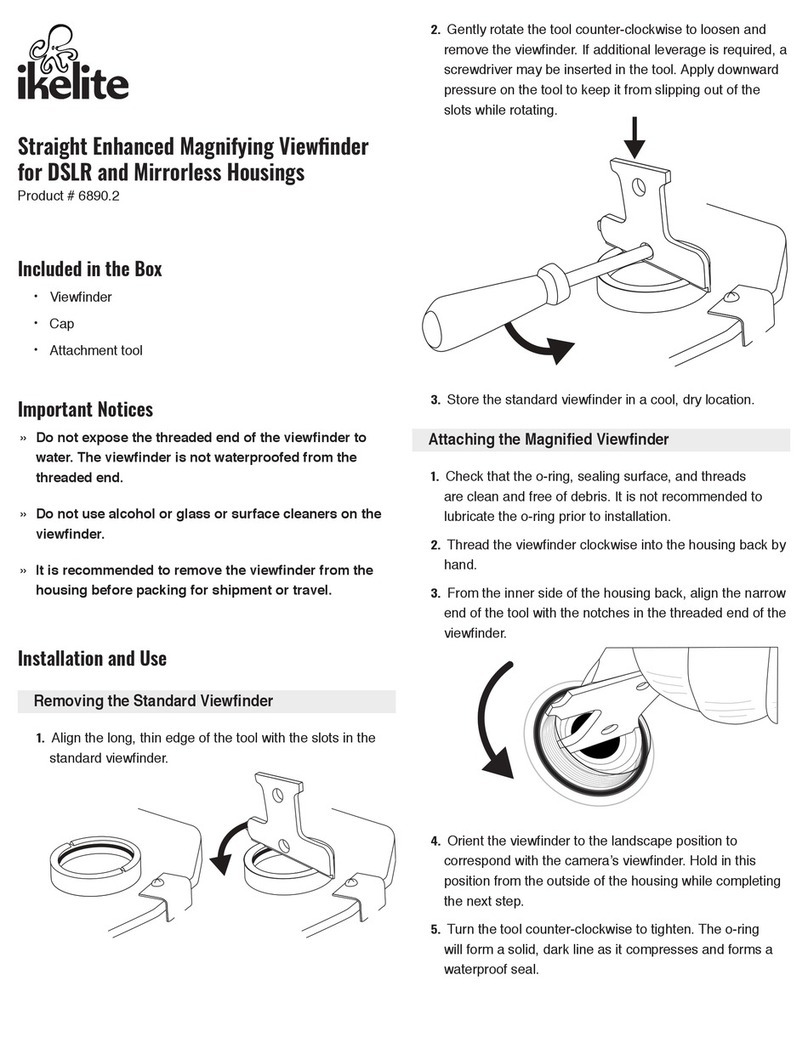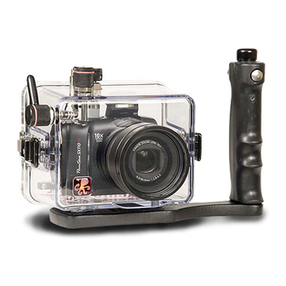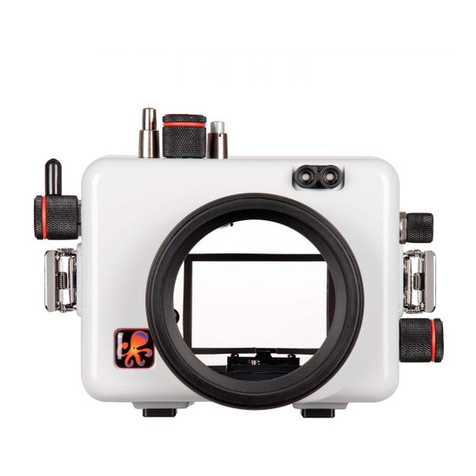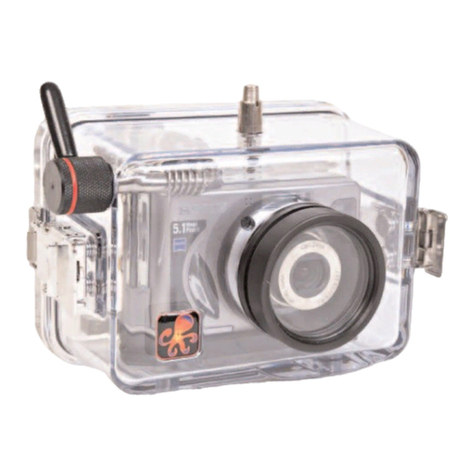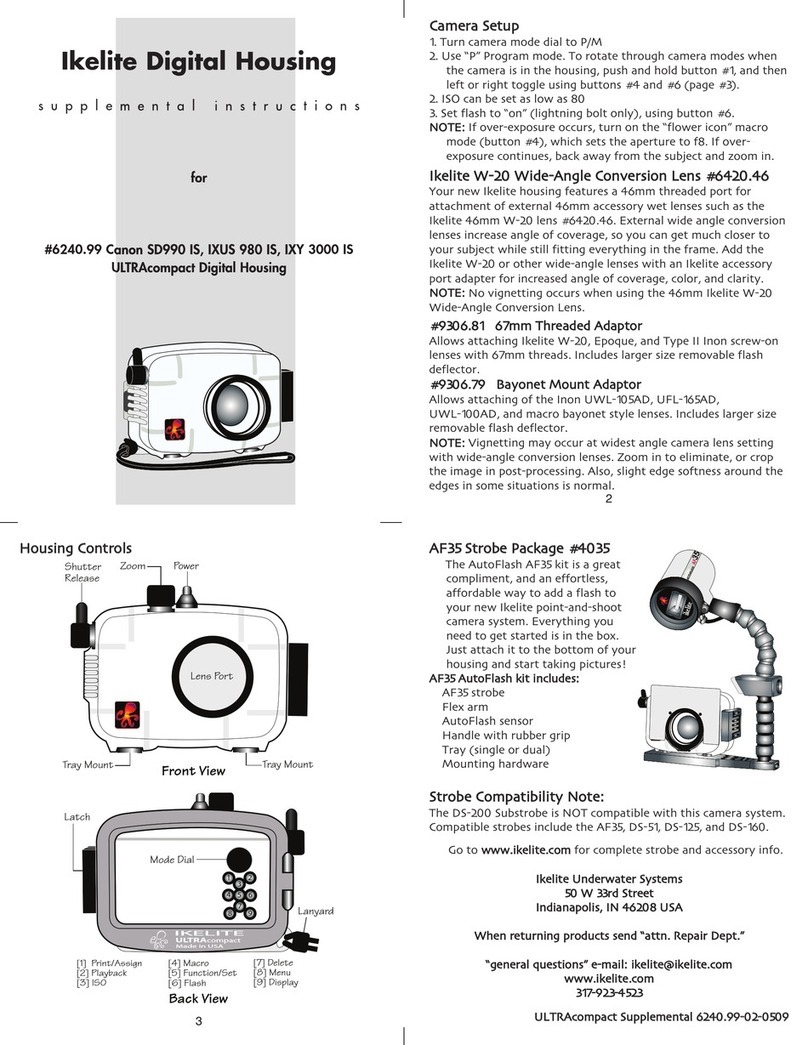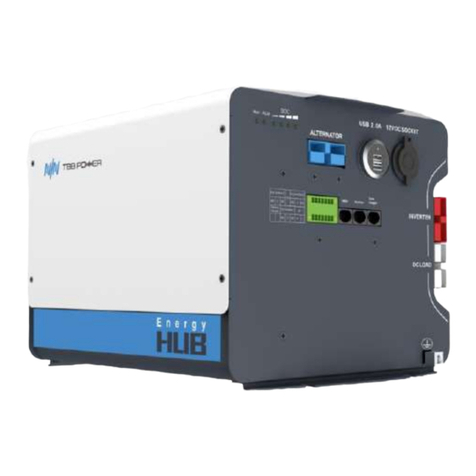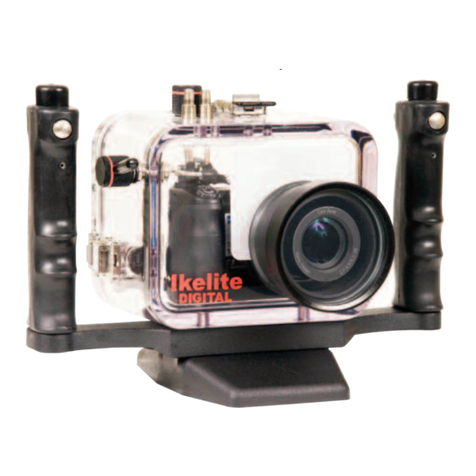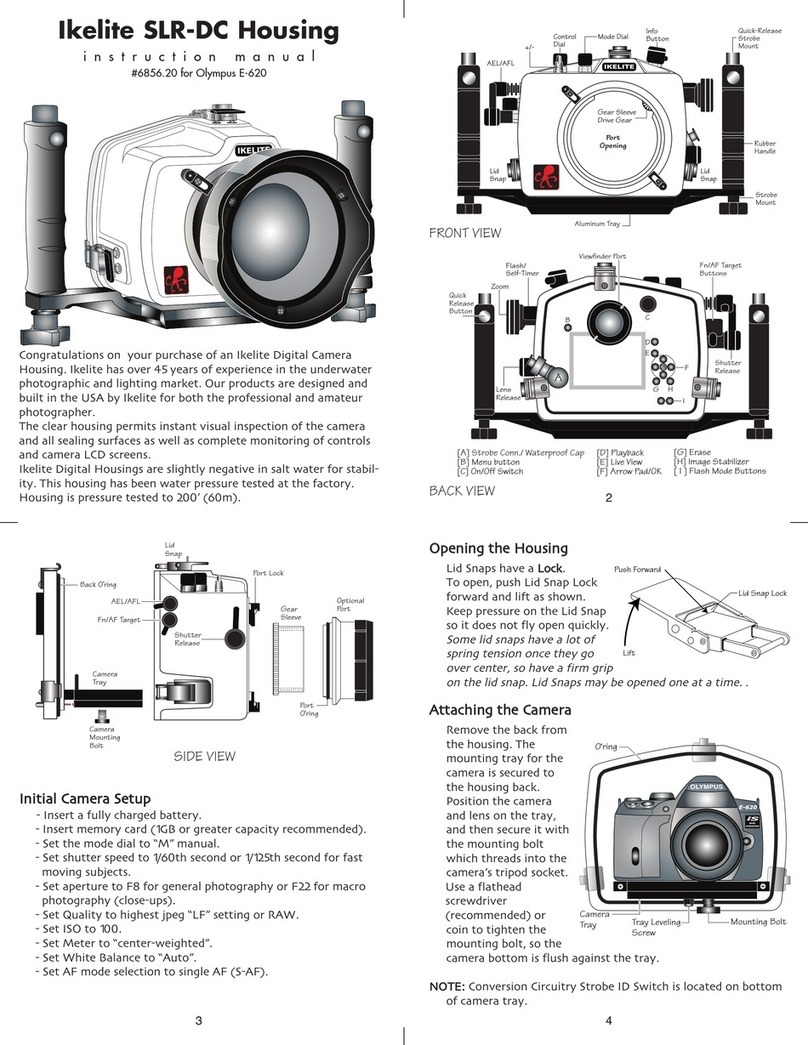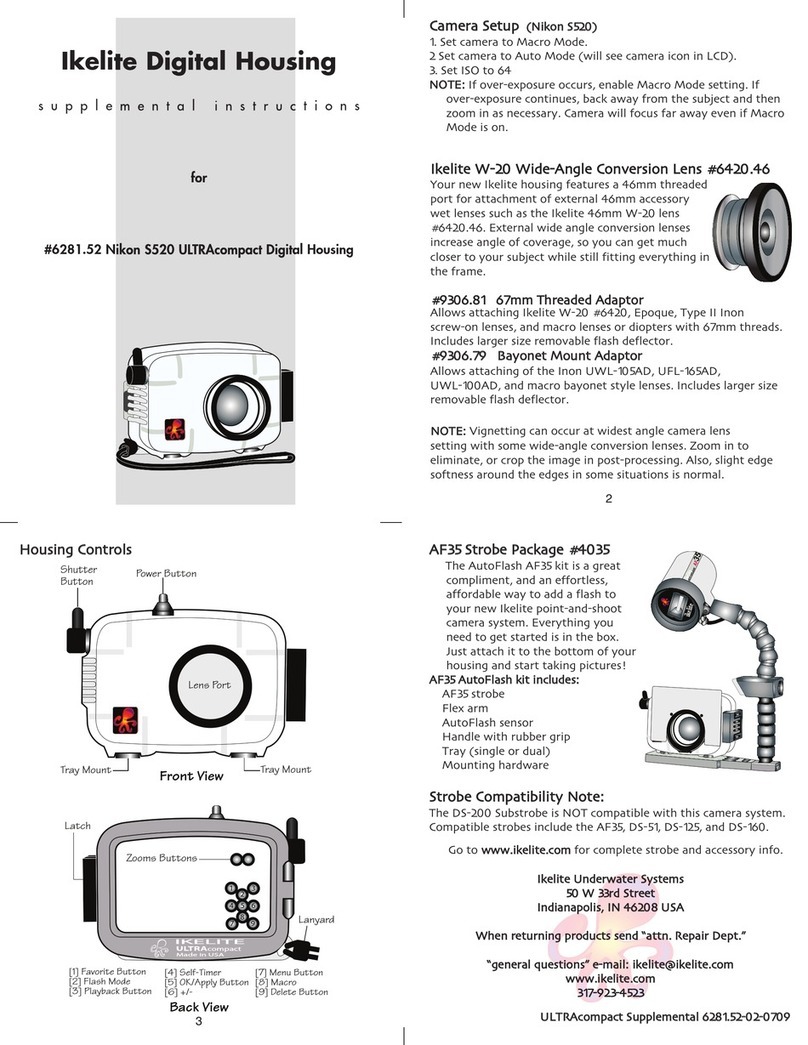
CCAAMMEERRAA’’SS WWIITTHH PPLLUUGG FFOORR RREEVVEERRSSEE CCIIRRCCUUIITTRR__________________________________________________________
Secure the camera to the tray and partially slide the camera and tray inside the
housing so you can then connect the cable from the reversing circuit to the Remote
port on the camera.
OOnn//OOffff SSwwiittcchh
An on/off switch is featured on the reversing circuit. If the Reversing Circuitry is
in the ON position when connected to the camera the LCD image will automatically
reverse. If the Reversing Circuitry is in the OFF position when connected to the
camera the LCD image will not reverse. Use the housings Reversing Circuitry ON/OFF
control to correct the image for viewing in the mirror.
When turning the camera OFF, there is a 5-minute standby power down delay
on the camera that occurs when the reversing circuit is ON during power down.
Therefore to avoid the 5-minute power down delay, turn the camera OFF and also
turn the circuit OFF to power down the camera immediately.
FFuunnccttiioonnss LLoocckkeedd OOuutt
When the reversing circuit is ON, some camera functions may be locked out. To
correct for such a problem, temporarily turn the circuit OFF, change the function on
the camera, and then turn the circuit back ON.
FFIINNAALL PPRREEPPAARRAATTIIOONN__________________________________________________________________________________________________________________
Remove the lens cap and cord from the camera.
Otherwise, they may interfere
with the housing seal.
The camera's auto focus feature is utilized underwater. For best results, move
in close to your subject and use the wide angle range to shoot thru as little water as
possible. The full zoom range is accessible underwater.
Turn the camera’s built-in flash OFF.
Chart shows recommended initial settings
underwater.
WWHHIITTEE BBAALLAANNCCEE__________________________________________________________________________________________________________________________
The LCD controls that extend from the back and side of the housing are designed
to access all P-MENU boxes. The primary reason for these is to adjust the WHITE
BALANCE controls. When the camera powers up, the white balance pad will NOT be
on the LCD P-MENU screen. This will need to be added to the P-MENU screen. Go to
your Sony Instruction book on how to do this.
Initially set the white balance to Auto. Use the touch screen controls on the
housing to change white balance.
CCoolloorr FFiilltteerr::When using the color filter (during the day), set camera white balance
to Indoor for 0-15 foot depth. For 15-80 foot depth, set white balance to Outdoor.
VViiddeeoo--LLiittee::When using optional Video Lite at NIGHT, set the camera white balance
to the Indoor position. During the DA , use the Outdoor setting for subjects beyond
4-5 feet and the Indoor setting for closer subjects.
CCAAMMEERRAASSEETTTTIINNGG
Power On/Off – Camera (On)
Zoom Lever – Wide Angle Setting
Focus – Auto Mode
Exposure – Auto Mode
Program AE – Auto Mode
Shutter Speed – 1/60 Normal
White Balance – Auto Mode (see section)
Steady Shot – Off
Built-in Flash – Off
IINNSSTTAALLLLAATTIIOONN
CCAAMMEERRAA TTRRAA________________________________________________________________________________________________________________________________
The camera mounts to the tray, which extends from the back plate of the
housing. DDOO NNOOTTremove the tray from the back plate.
Position the camera against the two
stabilizing pins on the tray and secure with
the camera mounting bolt. The camera
should fit easily on the tray and should
be parallel with the sides of the tray.
IINNSSEERRTTIINNGG TTHHEE CCAAMMEERRAA__________________
Check that the o’ring is clean and
properly positioned on the lip of the
clear housing back plate.
Once the camera is mounted to the tray as shown above, pull the housing
controls out to provide clearance for installing the camera. Partially slide the camera
into the housing so you can connect the reversing circuit cable to the Remote port
on the camera, (see Image Reversing Circuit).
DDOO NNOOTTforce this installation; the camera and tray should slide easily into
place so the housings back plate o’ring is resting against the main housing body.
In this position the lid snaps can be positioned over the lid hooks on the housing
back plate and snapped into position to seal the housing.
HHOOUUSSIINNGG CCOONNTTRROOLLSS________________________________________________________________________________________________________________
Slide the housing controls back in place making sure they properly align with
the camera functions.
Operate each control to see how it works with the camera. Some controls such
as start/stop will be used frequently. Other controls may seldom be utilized. Refer
to your camera owner's manual for the proper function of each camera control.
Look thru the back to be sure that you can see into the viewfinder.
When using the housing controls, especially the start/stop, do NOT use excessive
force because you could damage the camera.
CCAAUUTTIIOONN
RReemmoovvee tthhee lleennss ccaapp aanndd ccoorrdd ffrroomm tthhee ccaammeerraa.. OOtthheerrwwiissee,, tthhee ccoorrdd mmaayy
iinntteerrffeerree wwiitthh tthhee hhoouussiinngg sseeaall..
IIff tthhee hhoouussiinngg ccoonnttrroollss aarree nnoott pprrooppeerrllyy ppoossiittiioonneedd,, tthheeyy ccoouulldd iinntteerrffeerree wwiitthh tthhee hhoouussiinngg sseeaall..
IIKKEELLIITTEE UUNNDDEERRWWAATTEERR SSSSTTEEMMSS
5500 WWeesstt 3333rrdd SSttrreeeett •• PPOO BBooxx 8888110000 •• IInnddiiaannaappoolliiss,, IINN 4466220088 UUSSAA •• 331177..992233..44552233
EEmmaaiill:: iikkeelliittee@@iikkeelliittee..ccoomm•• wwwwww..iikkeelliittee..ccoomm
6038.82-01-0707
O’ring
Back Plate
Camera Mounting Bolt
Camera Tray
Stabilizing
Pins on Right
Side of Camera
